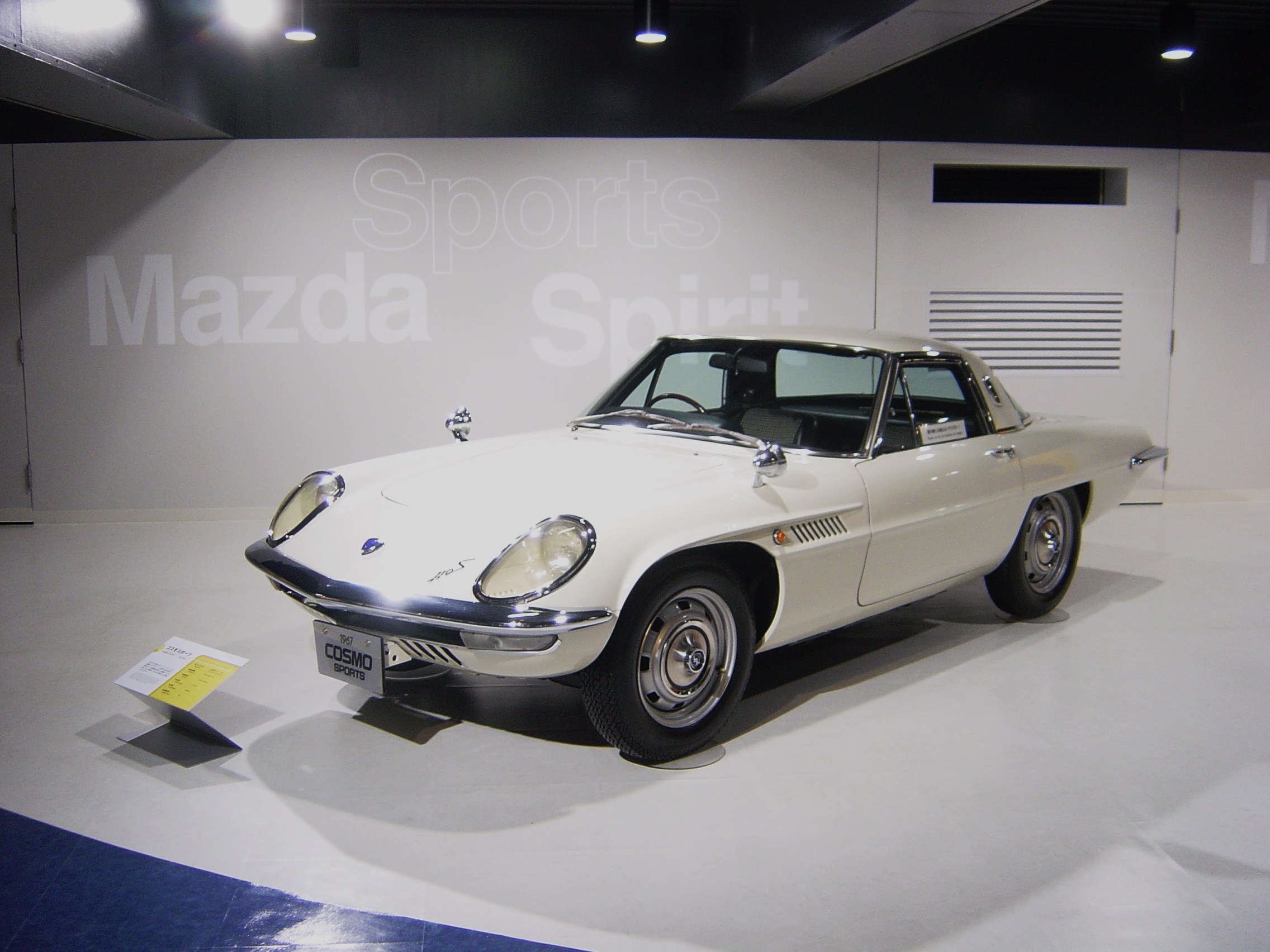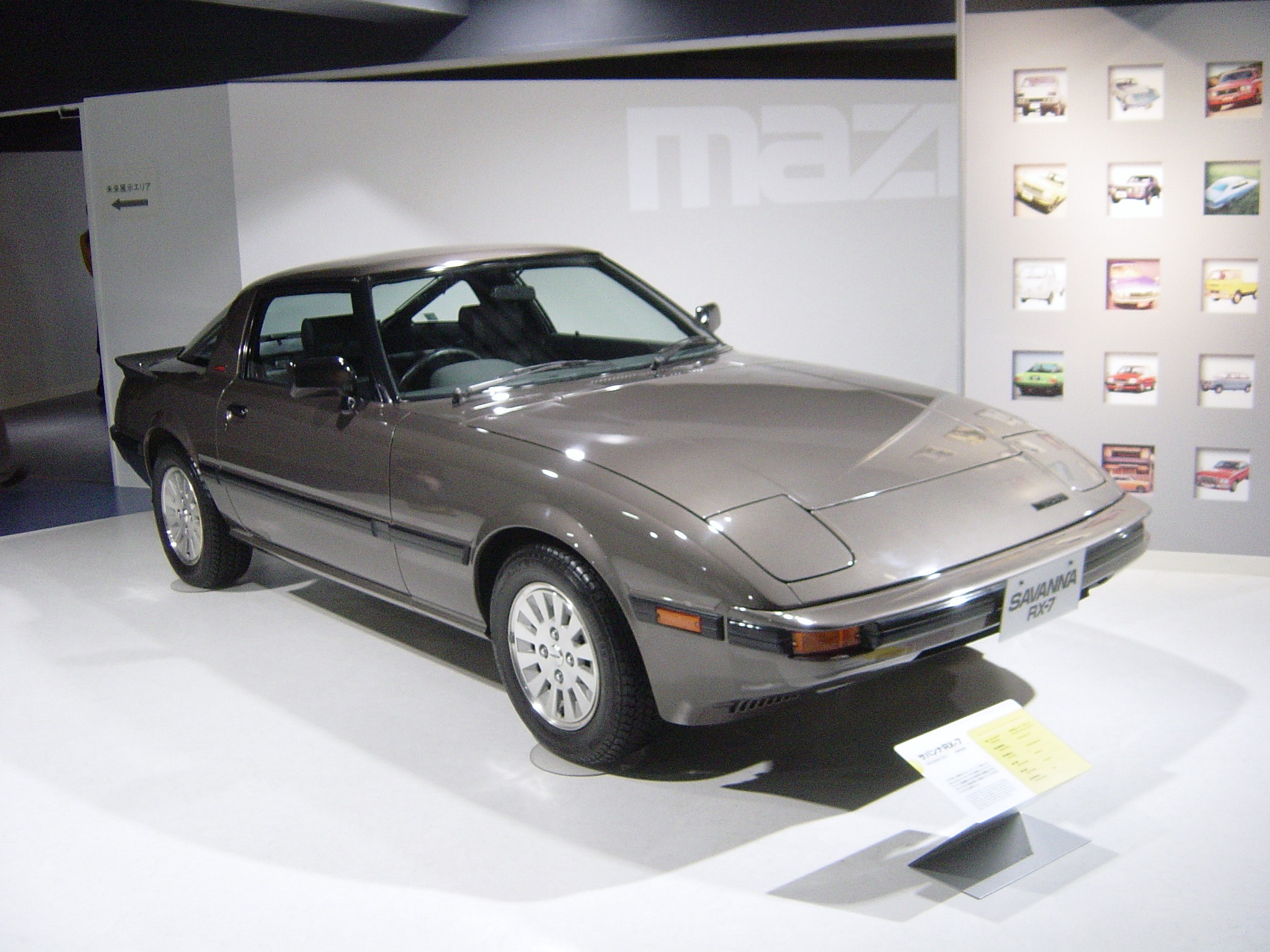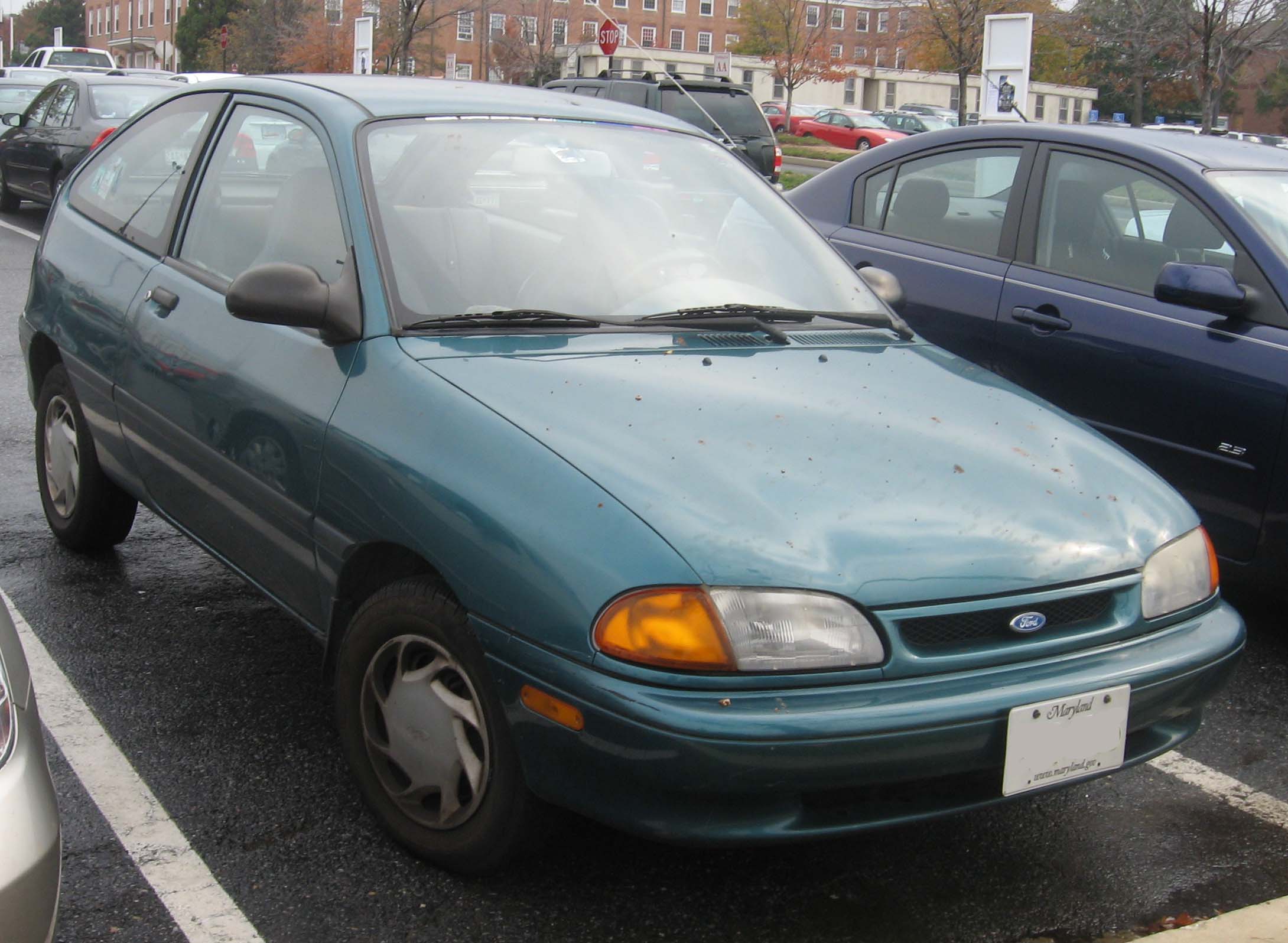|
Mazda B Engine
The Mazda B-series engine - not to be confused with the Mazda B-Series truck - is a small-sized, iron-block, inline four-cylinder with belt-driven SOHC and DOHC valvetrain ranging in displacement from 1.1 to 1.8 litres. It was used from front-wheel drive economy applications to the turbocharged full-time 4WD 323 GTX and rear-wheel drive Miata as well as numerous other models. The Mazda B-series is a "non-interference" design, meaning that breakage of its timing belt does not result in damage to valves or pistons, because the opening of the valves, the depth of the combustion chamber and (in some variants) the shaping of the piston crown allow sufficient clearance for the open valves in any possible piston position. B1 B1 - (68.0x78.4 mm) - came only as a SOHC 8-valve. It was available in the 1987-1989 Mazda 121 and later model Kia Sephia in European and Asian markets. A fuel-injected variant was used in select European market 1991-1995 Mazda 121s BJ The BJ engine (7 ... [...More Info...] [...Related Items...] OR: [Wikipedia] [Google] [Baidu] |
Mazda
, commonly referred to as simply Mazda, is a Japanese multinational automotive manufacturer headquartered in Fuchū, Hiroshima, Japan. In 2015, Mazda produced 1.5 million vehicles for global sales, the majority of which (nearly one million) were produced in the company's Japanese plants, with the remainder coming from a variety of other plants worldwide. During this time, Mazda was the 15th-largest automaker in terms of production globally. History Creation Mazda began as the Toyo Cork Kogyo Co., Ltd, as a cork-making factory founded in Hiroshima, Japan, 30 January 1920. Toyo Cork Kogyo renamed itself to Toyo Kogyo Co., Ltd. in 1927. In the late 1920s the company had to be saved from bankruptcy by Hiroshima Saving Bank and other business leaders in Hiroshima. In 1931, Toyo Kogyo moved from manufacturing machine tools to vehicles with the introduction of the Mazda-Go auto rickshaw. The name ''Mazda'' came into existence with the production of the company's fi ... [...More Info...] [...Related Items...] OR: [Wikipedia] [Google] [Baidu] |
Mazda Miata
Miata can refer to * The Mazda MX-5 Miata car * ''Miata'', a female first name common among the Gola people The Gola or Gula are a West African ethnic group who share a common cultural heritage, language and history and who live primarily in western/northwestern Liberia and Eastern Sierra Leone. The Gola language is an isolate within the Niger–Congo ... See also * Miyata (other) {{disambig ... [...More Info...] [...Related Items...] OR: [Wikipedia] [Google] [Baidu] |
Autozam Revue
The Autozam Revue is a subcompact car that was sold by Autozam, introduced in 1990. The demise of that marque led to the cars being renamed as the Mazda Revue in some markets. The car was also sold in many export markets as the Mazda 121, where it replaced the previous 121 that had been based on the first-generation Ford Festiva. The Revue was available in most markets as a small four-door saloon with an optional canvas sunroof added in February 1991. 1.1-, 1.3- and 1.5-litre engines were offered, with either five-speed manual or four-speed automatic transmission. In 1996, the 121 name was shifted to export versions of the Mazda Demio, a tall, five-door hatchback, which became exported as the Mazda2 in its second generation. A Ford Fiesta, assembled at Ford's Valencia plant barely modified, but rebadged as the Mazda 121, was also sold in some markets after 1996 (where the Demio was sold at the same time with its original name). Sales of the Revue ended in Japan in June 1998. ... [...More Info...] [...Related Items...] OR: [Wikipedia] [Google] [Baidu] |
Kia Pride
The Kia Pride is a subcompact car sold by the South Korean automobile manufacturer Kia Motors between March 1987 and January 2000, and again since September 2011. Between April 2005 and September 2011 the Kia New Pride had been sold. Original models derived from the Ford Festiva and sold in South Korea and some export markets. Between 2005 and 2011, the New Pride was the South Korean market name for the Kia Rio JB sold in export markets. The Pride sold from 2011 to 2017 is also based on the Rio—this time the UB series. File:Kia Pride silver vl.jpg, Kia Pride (1987–2000) File:20110507 kia pride 1.jpg, Kia New Pride (2005–2011) File:20120211 kia pride 0001.jpg, Kia Pride (2011–2017) {{Set index article, cars Pride Pride is defined by Merriam-Webster as "reasonable self-esteem" or "confidence and satisfaction in oneself". A healthy amount of pride is good, however, pride sometimes is used interchangeably with "conceit" or "arrogance" (among other words) wh ... Ca ... [...More Info...] [...Related Items...] OR: [Wikipedia] [Google] [Baidu] |
Mazda Demio
The is a subcompact/ supermini/B-segment small car manufactured by Mazda since 1996. While sold across four generations in the domestic Japanese market, the Demio nameplate was rarely used outside of Japan, where it was usually called the Mazda2. The Demio nameplate was retired in 2019 as Mazda changed over to "Mazda2" for their home market as well. The Demio is built on the Mazda D platform and was preceded by two other small cars based on the platform: the Ford Festiva (designed and built by Mazda for Ford and also sold as the Mazda 121) that was introduced in 1986 on the DA platform and the Revue (sold by Mazda's Autozam marque) introduced in 1990 on the DB platform. The Mazda Demio added the DW ("W" for wagon) platform in 1996. The name "Demio" is derived from Latin '' meus'' to show possession, which in many Romance languages has become "mio." The third generation Demio earned the 2008 World Car of the Year title, while the fourth generation was awarded the 2014–2015 "J ... [...More Info...] [...Related Items...] OR: [Wikipedia] [Google] [Baidu] |
Ford Aspire
The Ford Aspire nameplate has been used by the American automobile manufacturer Ford for the following cars, in the following markets: * Ford Festiva, in North America from 1993 to 1997 * The sedan version of the Ford Figo The Ford Figo is a subcompact hatchback manufactured by Ford India in its Chennai and Sanand plants. Based on the Mark V European Ford Fiesta hatchback, the Figo has been sold in emerging countries between March 2010 and 2021. First generatio ..., a rebadged third generation Ford Ka in India since 2015 {{Set index article, cars Aspire ... [...More Info...] [...Related Items...] OR: [Wikipedia] [Google] [Baidu] |
Ford Laser
The Ford Laser is a compact car, originally a subcompact car in the first three generations, which was sold by Ford in Asia, Oceania, and parts of South America and Africa. It has generally been available as a sedan or hatchback, although convertible, wagon and pick-up versions have also been available in different markets. The sedan, and briefly station wagon, versions were badged Ford Meteor in Australia between 1981 and 1987. The Ford Meteor name was also used in South Africa. The Ford Laser was a restyled version of the Familia/323 models produced by Mazda in Japan from 1980 onwards. Ford had acquired a 25% stake in Mazda in 1979. Platform and assembly-line sharing with the locally produced Mazda Familia in Japan allowed the Laser in that market to be offered with a plethora of engine, paint and trim configurations not available anywhere else in the world. This was most notably evident during the 1980s with multiple turbocharged variants, unique bodyshells such as the cabr ... [...More Info...] [...Related Items...] OR: [Wikipedia] [Google] [Baidu] |
Mazda Familia
The , also marketed prominently as the Mazda 323, Mazda Protegé and Mazda Allegro, is a small family car that was manufactured by Mazda between 1963 and 2003. The Familia line was replaced by the Mazda3/Axela for 2004. It was marketed as the ''Familia'' in Japan, which means "family" in Latin. For export, earlier models were sold with nameplates including: "800", "1000", "1200", and "1300". In North America, the 1200 was replaced by the Mazda GLC, with newer models becoming "323" and "Protegé". In Europe, all Familias sold after 1977 were called "323". The Familia was also rebranded as the Ford Laser and Ford Meteor in Asia, Oceania, Southern Africa, some Latin American countries and, from 1991, as the Ford Escort and Mercury Tracer in North America. In addition, the Familia name was used as the Mazda Familia Wagon/Van, a badge-engineered version of the Nissan AD wagon (1994–2017) and Toyota Probox (2018–present). Mazda Familias were manufactured in the Hiroshima Plant ... [...More Info...] [...Related Items...] OR: [Wikipedia] [Google] [Baidu] |
Mazda B3E Engine
, commonly referred to as simply Mazda, is a Japanese multinational automotive manufacturer headquartered in Fuchū, Hiroshima, Japan. In 2015, Mazda produced 1.5 million vehicles for global sales, the majority of which (nearly one million) were produced in the company's Japanese plants, with the remainder coming from a variety of other plants worldwide. During this time, Mazda was the 15th-largest automaker in terms of production globally. History Creation Mazda began as the Toyo Cork Kogyo Co., Ltd, as a cork-making factory founded in Hiroshima, Japan, 30 January 1920. Toyo Cork Kogyo renamed itself to Toyo Kogyo Co., Ltd. in 1927. In the late 1920s the company had to be saved from bankruptcy by Hiroshima Saving Bank and other business leaders in Hiroshima. In 1931, Toyo Kogyo moved from manufacturing machine tools to vehicles with the introduction of the Mazda-Go auto rickshaw. The name ''Mazda'' came into existence with the production of the company's f ... [...More Info...] [...Related Items...] OR: [Wikipedia] [Google] [Baidu] |
Fuel Injection
Fuel injection is the introduction of fuel in an internal combustion engine, most commonly automotive engines, by the means of an injector. This article focuses on fuel injection in reciprocating piston and Wankel rotary engines. All compression-ignition engines (e.g. diesel engines), and many spark-ignition engines (i.e. petrol engines, such as Otto or Wankel), use fuel injection of one kind or another. Mass-produced diesel engines for passenger cars (such as the Mercedes-Benz OM 138) became available in the late 1930s and early 1940s, being the first fuel-injected engines for passenger car use. In passenger car petrol engines, fuel injection was introduced in the early 1950s and gradually gained prevalence until it had largely replaced carburettors by the early 1990s. The primary difference between carburetion and fuel injection is that fuel injection atomizes the fuel through a small nozzle under high pressure, while a carburettor relies on suction created by intake ai ... [...More Info...] [...Related Items...] OR: [Wikipedia] [Google] [Baidu] |
Ford Festiva
The Ford Festiva is a subcompact car that was designed and manufactured by Mazda for Ford between 1986 and 2002. Festiva was sold in Japan, the Americas, and Australia. The name "Festiva" is derived from the Spanish word for " festive". It was not related to the similarly sized and named Ford Fiesta, and was not replaced by the Ford Ka, which is smaller. Designed by Mazda using the DA platform and B series inline-four engines, the Festiva continued the trend of Fords built and designed by Mazda for the Asia-Pacific market such as the Laser and Telstar. South Korean first generation sales began in 1987 under the name Kia Pride, assembled by Kia under license. Australasia and Europe received the first version between 1987 and 1991 as the "Mazda 121". After 1991, Australasian sales occurred under the "Ford Festiva" name, while European sales continued under the name "Kia Pride". Kia ended production of the Pride in 2000. This ongoing production has been in parallel to the second ge ... [...More Info...] [...Related Items...] OR: [Wikipedia] [Google] [Baidu] |





